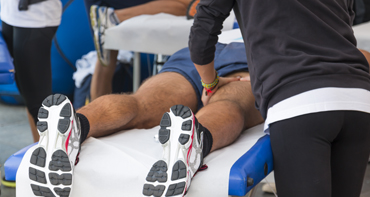
This article was published on: 04/6/17 7:32 AM
Unfortunately, one of the downsides of sport is sports injury. Fortunately, sports injury occurs relatively infrequently, so the health and psychological benefits of participating in sports far outweigh the potential temporary downside of a sports injury. Athletes do get severe cramps, twists and sprains while playing, which, if not treated correctly, may lead to further pain and damage.
Physiotherapy is one of the quick and best means to cure such injuries as it provides fast relief to the damaged area and makes the muscles stronger. Injuries and athletes go hand in hand. Both professional and amateur athletes are subject to various injuries like that of muscles, ligaments, joints and the nervous system. Sports physiotherapy involves special treatments which includes injury specific exercises and massage to enhance the healing process. Specially designed training allows physiotherapists to identify the main cause of pain.
Different forms of treatment are dictated by the injury itself. For some injuries, massage or hands-on pressure therapy is appropriate. In other situations, heat, cold, ultrasound or gentle electrical therapy may be recommended and useful. Each form of therapy targets specific conditions like swelling, muscle tension or similar conditions. In many cases, a combination of treatments may be indicated to relieve the patient’s symptoms.
Treatments may also include injury specific exercises which could be helpful in healing. Swelling and pain must be addressed as an integral part of the treatment plan, and exercise is often an essential part of that treatment. Healing often takes time and repeated treatments. As the healing process progresses, the type of treatment will almost certainly be altered by your physiotherapist to conform with the changing needs of the athlete’s injury.
Common sports injuries can be categorized as:
Specific treatment of the injury may include the following: